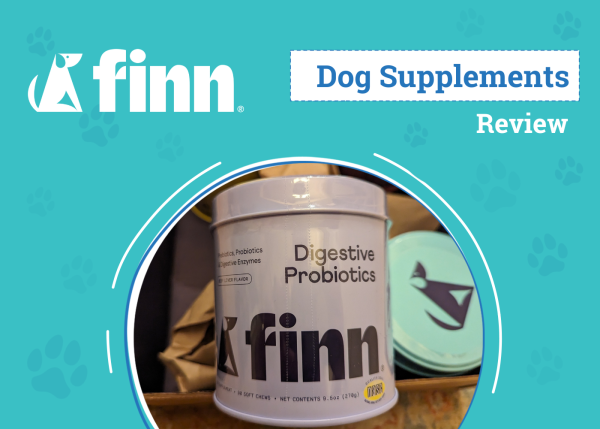There is nothing like having a full litter of newborn puppies in your home, but if you’re raising puppies right now, you know it’s hard work. Caring for a mother dog and her puppies responsibly is no walk in the park. Luckily, there’s a lot you can do to make the process go easily. A little knowledge goes a long way!
When it comes to weaning, many first-time breeders expect the mom to kick off her puppies and teach them to eat all on her own. But if you want the weaning process to go more smoothly, you can take a more active part in helping your puppies learn to eat solids. Here’s a quick guide to weaning puppies.

Step-By-Step Guide for Weaning Puppies
Weaning puppies off their mother’s milk can be a challenge. So, having some steps to follow can help make the process easier for the puppies and the mother.
1. Start at the Right Time
Puppies should be fully weaned by eight weeks of age, but they’ll start eating food long before then. Most of the time, you’ll want to give your puppies their first food at around three to four weeks.
To begin with, you can put down some solid food 2-3 times a day, depending on how interested they are. They should still be getting most of their nutrition from their mother until they are approaching 5 weeks old, unless she is struggling to keep up with demand. By the time the pups are 5 weeks old, you should be putting down food 5-6 times a day, every 2-3 hours.
- First, your puppies’ teeth will start coming in.
- Second, your puppies might show an interest in their mothers’ food (although not all do at this age).
- And third, you might notice the mother becoming more impatient when she’s feeding her pups or your pups acting more frustrated after eating. That’s because the mother is starting to kick her pups off before they’re completely full.

2. Choose the Right Food
It is important to choose a food specifically formulated for growing puppies as this will contain the right balance of key nutrients during this period of rapid growth and development. Ideally, the mother should be eating a mixture of puppy and adult food, and the easiest way to transition pups to solids is to provide that food mixed with water or puppy formula to create a slurry. If you are using dry kibble, be sure to soak it to make it soft and easy for small mouths to eat without choking. Puppy formula is best, as cows’ milk, goats’ milk, and baby formula are all likely to make your puppies sick. As they puppies grow and are eating more of the solid food, you can alter the ratio so they are having more of the puppy food and less of the formula.
Most puppy foods and formula will include a feeding guide based on puppy weight and age, but if in doubt, be sure to reach out to a vet for advice.
From around a month of age, make sure puppies have access to a shallow dish of fresh water at all times, preferably something heavy that cannot be easily tipped over.
3. Introduce the Food Dish
The best food dish for a puppy this age is a flat, shallow pan that cannot be easily tipped over. If it is a large litter, you will need to have more than one food dish to make sure all the puppies can access it easily.
Puppies fed from too small a bowl will often learn to eat too quickly or become possessive over their food, so make sure everyone has plenty of space to eat. It’s also important to have feeding times, so anything that’s leftover after 20 minutes should be taken up, and a fresh meal placed down at the next meal time.
4. Let Them Explore
At first, your puppies might not show much interest in whatever’s in their food dish. Give them some time to explore and expect a mess. It’s normal for puppies to walk in their dish before they figure out how to lap from it! If your puppies still don’t seem to understand that they’re supposed to eat, you can try dipping your finger in the food and touching it to your puppy’s mouth. Soon, your puppies will be tasting it for themselves. Remember to pick up any uneaten food after 15-20 minutes.

5. Gradually Transition to More Solid Food
As your puppies get better at eating, you’ll want to feed them larger meals. You’ll also want to increase the ratio of solids to liquid in their meals. Over time, your puppies should be eating more and more food from you and spending less time nursing. Always follow the feeding guidelines of the puppy food. By the time your puppies are eight to ten weeks old, they should only be eating puppy food and be fully weaned. You’ll need to feed them 4-5 meals a day at this point—as they grow up, that can transition down to 3 meals a day by the time they are 10-12 weeks old, and eventually go down to two meals a day when they are 4-5 months old.
Below is a rough transitioning guide* of how to make up your puppy’s food and how often to feed them:
| Age | Milk/Solid Food Ratio | % From Mother | Meals per Day |
| 3 weeks | 90% puppy milk/10% solid | >90% | 1-2 |
| 4 weeks | 75% puppy milk/25% solid | 75% | 3-4 |
| 5 weeks | 50% puppy milk/50% solid | 50% | 5-6 |
| 6-7 weeks | 25% puppy milk/75% solid | 25% | 5-6 |
| 8-10 weeks | 10% puppy milk/90% solid | 10% | 4-5 |
| 10-12 weeks | 100% solid | None | 3-4 |
| 12-20 weeks | 100% solid | None | 3 |
| >20 weeks | 100% solid | None | 2 |
*This is a guide only. Every litter is different, so these ratios may vary, depending on the needs of the pups and mother.
Some puppies are reluctant to stop feeding from their mother, and some mothers find it hard to get away from demanding pups. From the time you start introducing solid food, it’s important to give the puppies time away from mom and allow her to get out and exercise. Her milk should start to dry up after around 8 weeks, sometimes sooner, but if the pups are allowed to keep suckling, she will continue to lactate, so you may need to run interference to make sure she gets enough time away from them.
6. Weigh the Puppies Regularly
As you transition, weigh your puppies every day. Although the exact weight gain speed depends on the breed, puppies should be steadily gaining weight from when they are a few days old. If at any point in the weaning process your puppies’ weight gain is stalling, slow down and make sure they have more access to their mother. If any puppies are struggling to keep up with their siblings, or if the whole litter isn’t constantly gaining weight, you may need to take on a more active role in their feeding. Contact your vet if you have any concerns or questions.

Conclusion
Being a “puppy parent” is a big responsibility. You have to balance the needs of a whole family of dogs and help them transition from being fully dependent on their mother to be ready for adoption. Weaning is a big—and messy—part of that process, but seeing your puppies digging into a bowl of food is a great reward.
Featured Image Credit: Anna Hoychuk, Shutterstock





















4 Responses
what is a good weight for a 6 wk old black lab
Hello Todd,
thank you for your question. This also depends on the sex of your labrador. Females are generally smaller than males. In general, at this age the weight of a male Labrador puppy should be somewhere between 7-12 lbs and for female it could be around 6-10 lbs.
Please keep in mind that these numbers are just estimates and it strongly depends on your dog's body condition score. Hope this helps.
Love the information. Have a 6-7 week old and getting nervous about what to feed him. He seems very healthy and Mother is doing an excellent job. But I know it's time to get off the teat.
Hi Lee. Thanks for your comment, and congrats on your new pup! It’s great to hear he’s healthy and that Mom is doing such a good job. If you'd like any more guidance during the weaning stage, feel free to get in touch with one of our vets. They'll also be able to recommend specific foods and feeding schedules based on his breed and size. You can book a video consultation with our team at https://pangovet.com. Hope this helps! 🙂